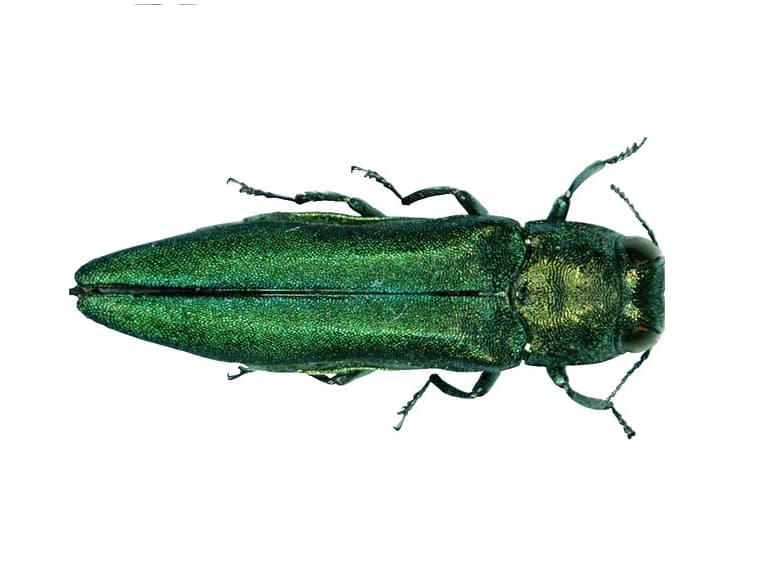Freezing Weather May Reduce Emerald Ash Borer Numbers
OutdoorHub Reporters 01.07.14

Though the bitter cold continued to batter many states across the Central, Eastern, and Southern United States on Tuesday, there may be one good thing to come out of the chill and snow. Hiding in many thousands of ash trees are the larvae of emerald ash borers, a notoriously invasive species that has decimated its tree-hosts’ numbers. Inside their wooden abodes, the larvae wait for winter to pass. United States Forest Service biologist Rob Venette however, believes many of the destructive insects may not live to see spring.
“If it does get cold enough, they will freeze,” Venette told The Chicago Tribune.
According to the biologist, emerald ash borer larvae burrow into the bark of ash trees and are naturally warded against the cold. However, this protection can only go so far, and as the thermometer drops toward 20 degrees below zero, the larvae come into danger.
“Once we start getting in the range of minus-20 to minus-30, that’s when we see pretty significant factions begin to die,” Venette said.
If temperatures do get that low, Venette estimates larvae die-offs of 80 percent or more. It is not unlikely for weather to take a turn for the worse, the National Weather Service is already reporting temperatures in the range of 40 to 60 degrees below zero across the Midwest, with wind chill factored in. However, unlike humans, wintering larvae are not likely to be affected by wind chill.
“I’m one of the few people who like weather like this, from the buggy side of things,” Venette told KMSP-TV.
Minnesota, where Venette’s research laboratory is located, is one of the states most threatened by the ash borer since it was discovered on American soil in 2002. According to the state’s Department of Natural Resources, Minnesota contains nearly a billion ash trees, the majority of which grow in the state’s interior. Venette fears that if the ash borer becomes established in Minnesota’s central regions, the pest might become impossible to remove.
“It would be economically and ecologically devastating,” Venette said.
Besides being a valuable manufacturing resource, ash trees are a vital component of their environment, and provide shelter and food to a variety of wildlife. Venette hopes that low temperatures would reduce the number of emerald ash borers to a point where the invasive species can be dealt with insecticide and other methods.

